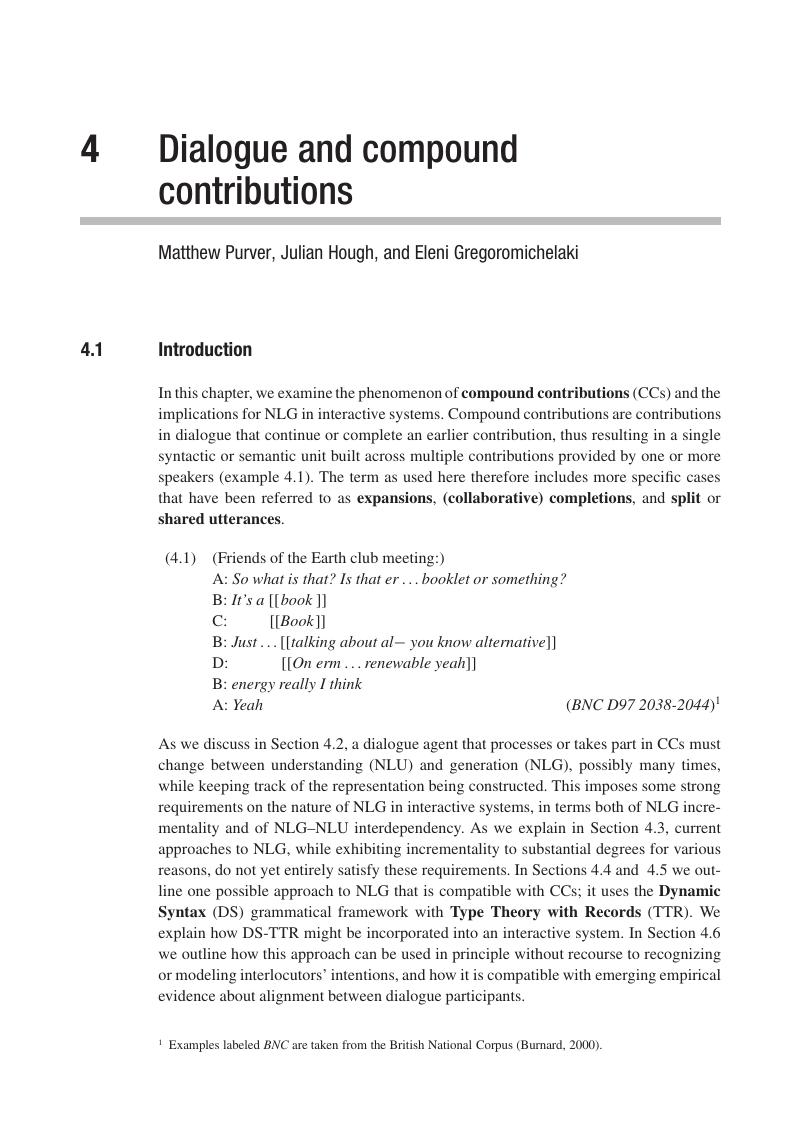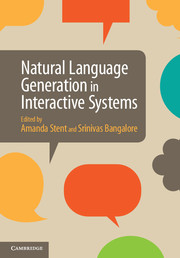Book contents
- Frontmatter
- Contents
- List of contributors
- 1 Introduction
- Part I Joint construction
- 2 Communicative intentions and natural language generation
- 3 Pursuing and demonstrating understanding in dialogue
- 4 Dialogue and compound contributions
- Part II Reference
- Part III Handling uncertainty
- Part IV Engagement
- Part V Evaluation and shared tasks
- Author index
- Subject index
- References
4 - Dialogue and compound contributions
from Part I - Joint construction
Published online by Cambridge University Press: 05 July 2014
- Frontmatter
- Contents
- List of contributors
- 1 Introduction
- Part I Joint construction
- 2 Communicative intentions and natural language generation
- 3 Pursuing and demonstrating understanding in dialogue
- 4 Dialogue and compound contributions
- Part II Reference
- Part III Handling uncertainty
- Part IV Engagement
- Part V Evaluation and shared tasks
- Author index
- Subject index
- References
Summary

- Type
- Chapter
- Information
- Natural Language Generation in Interactive Systems , pp. 63 - 92Publisher: Cambridge University PressPrint publication year: 2014
References
- 6
- Cited by

